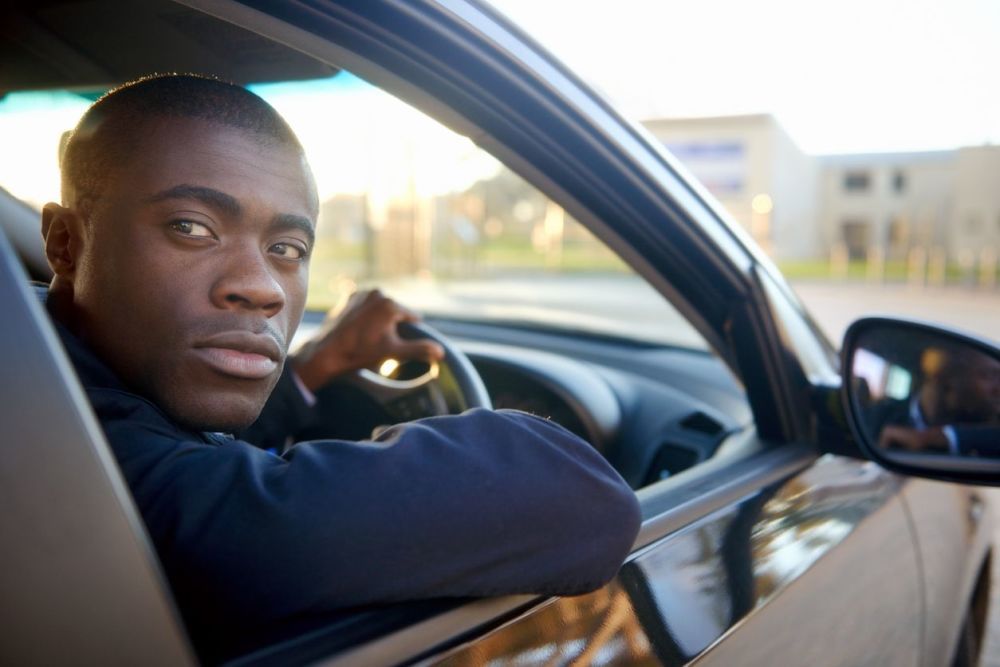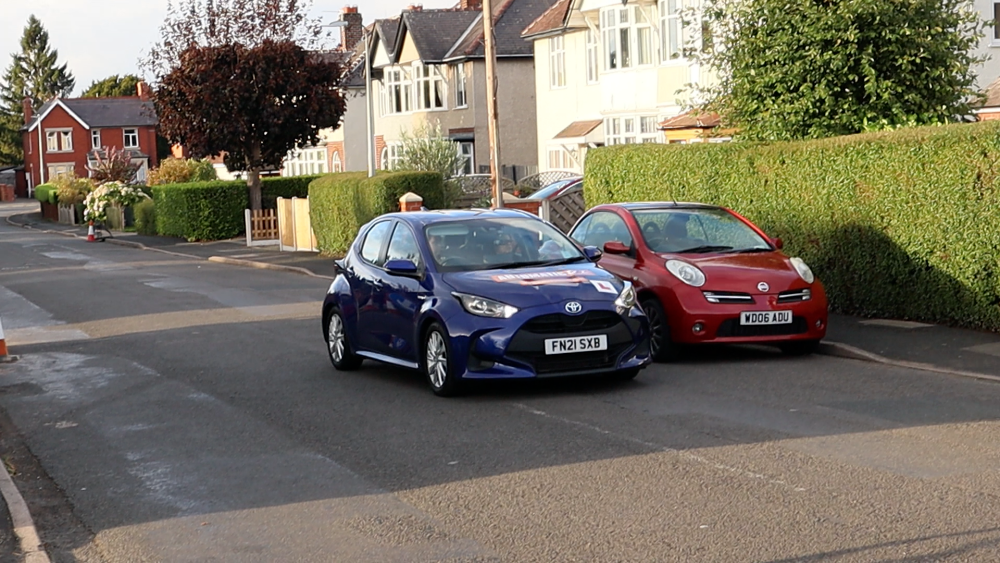It may be an idea to choose a reference point that may ultimately leave too much of a gap from the kerb to eliminate hitting it. Don’t be fooled into thinking the reverse parallel park has to be completed in one single perfect move. It’s better to adjust than hit the kerb as this may result in a test failure.
At your reference point, steer full right lock. This will bring the car in parallel to the kerb. As you are slowly reversing, keep looking all around but also make frequent checks in your left mirror to assess:
- if your car is parallel from the kerb and a suitable distance from the kerb (around 30cm) to stop.
- if your car is too far from the kerb and needs adjusting
If you feel the car is a suitable distance from the kerb and do not need to adjust, just before you stop, steer your wheel to the left 1 turn to straighten up the front wheels.
If you are too far from the kerb, then essentially you will need to go back to the 2 O'clock position and then reverse to get the correct focal point.
For this second point-of-turn, you may need to establish a different reference point. Once the front of the car in the mirror is level with the kerb then turn one and a half turns to the left to straighten the wheels









